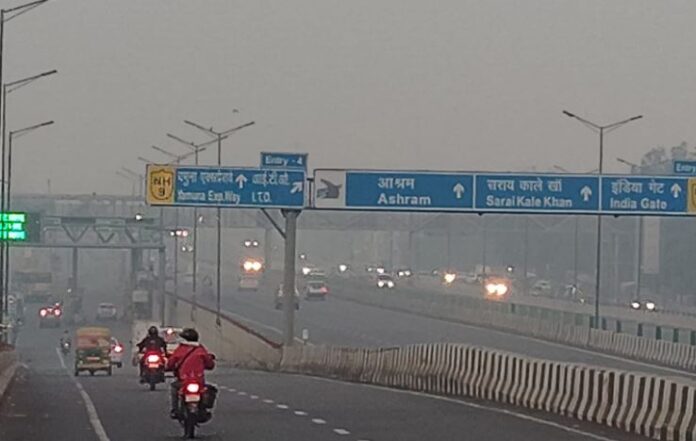Delhi’s air quality plunged into the “very poor” category during Diwali, making it the world’s most polluted city, according to data from the Central Pollution Control Board (CPCB). The city recorded a 24-hour average Air Quality Index (AQI) of 321 on Diwali, a sharp rise from last year’s AQI of 218. In the past decade, Diwali days with AQIs below this year’s were recorded only in 2017 (319), 2018 (281), 2022 (312), and 2023. Despite a firecracker ban, widespread defiance led to severe noise pollution and a dense smog blanket over the city.
The PM2.5 and PM10 levels surged significantly, with PM2.5 peaking at 1,853 µg/m3 in Vivek Vihar at midnight and PM10 reaching 1,906 µg/m3 in Jahangirpuri around 11 p.m. These levels are over 30 times the national standard of 60 µg/m3 for PM2.5 and 20 times the standard of 100 µg/m3 for PM10.
Data from the Delhi Pollution Control Committee (DPCC) revealed that PM2.5 and PM10 levels began to climb at 8 p.m., peaking around midnight and slowly declining after 4 a.m. In central areas like India Gate, PM2.5 hit 703 µg/m3 at 3 a.m., and PM10 peaked at 1,101 µg/m3 by 2 a.m., only easing back to 388 µg/m3 for PM2.5 and 532 µg/m3 for PM10 by 6 a.m. Several monitoring stations, including Anand Vihar, Wazirpur, and Mundka, showed pollution levels remaining four to five times above safe limits until early morning.
Contributing to the pollution surge was an uptick in stubble-burning cases in Punjab, which reached 484 incidents on Diwali, the season’s highest single-day count, raising the state’s cumulative total to 2,950 events. On Diwali, stubble burning accounted for 27.61% of Delhi’s PM2.5 concentration, followed by the transport sector, contributing 13.35%.
Despite favourable wind speeds in the early evening, wind slowed after 6 p.m., limiting the dispersal of pollutants. The India Meteorological Department (IMD) recorded a wind speed drop from 12-16 kmph to 3-7 kmph, with conditions improving slightly on Friday morning.
An analysis by the Centre for Science and Environment (CSE) indicated that pre-winter pollution in Delhi was driven primarily by vehicular emissions, rather than stubble burning alone. Environmental experts, like NCR-based Anand Arya, emphasized the need for a year-round, multi-sectoral approach to tackle pollution, focusing on controlling emissions from transportation and industry.
In its air quality bulletin, the Indian Institute of Tropical Meteorology (IITM) cautioned that meteorological conditions would continue to hinder pollutant dispersion from Diwali night onward, potentially extending the city’s air quality challenges.



